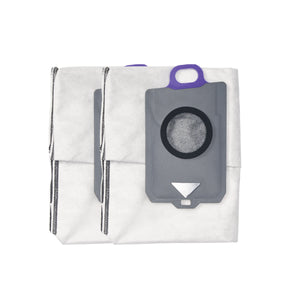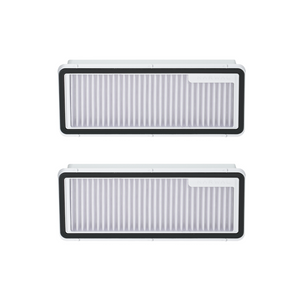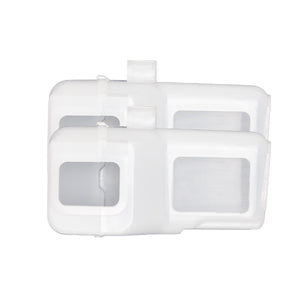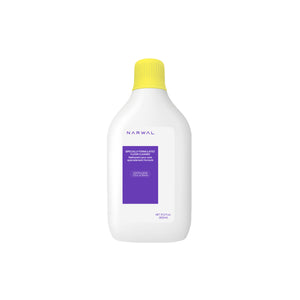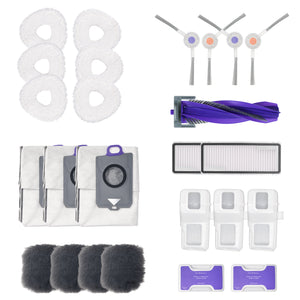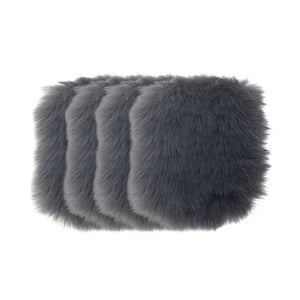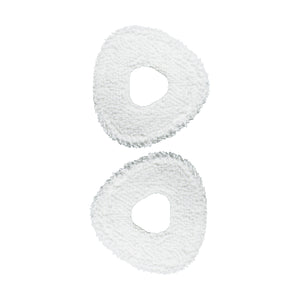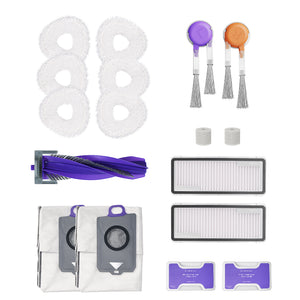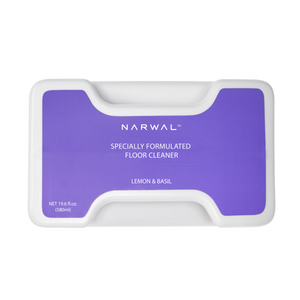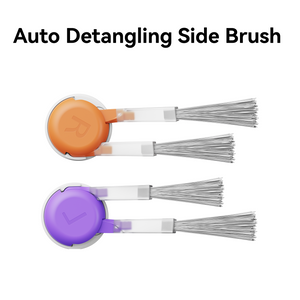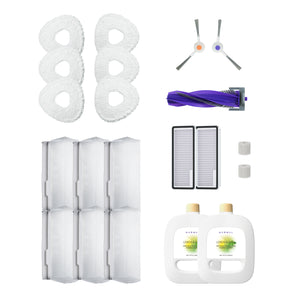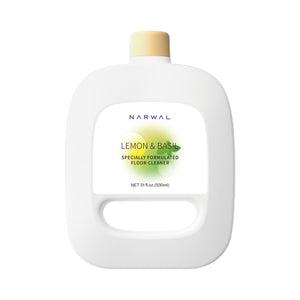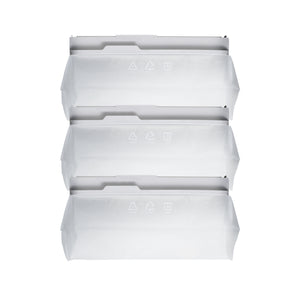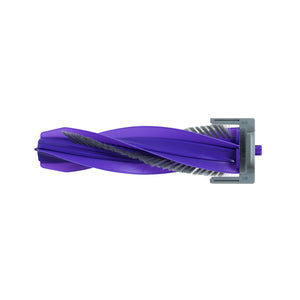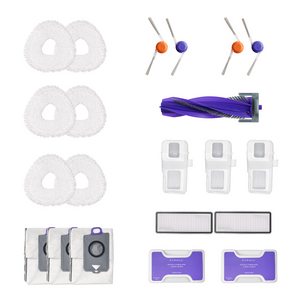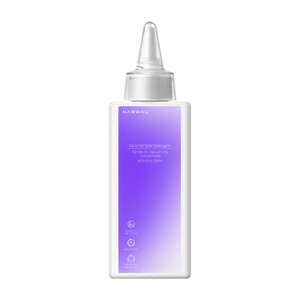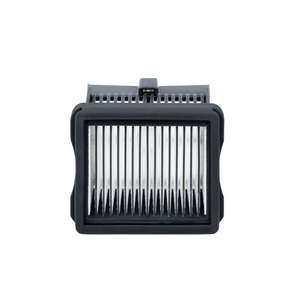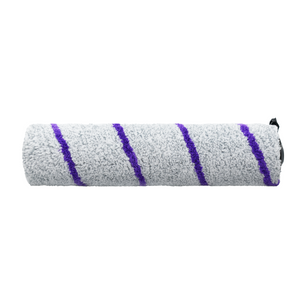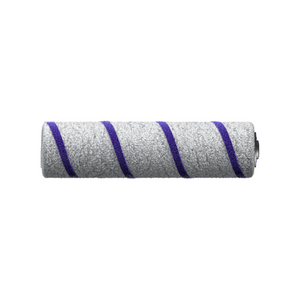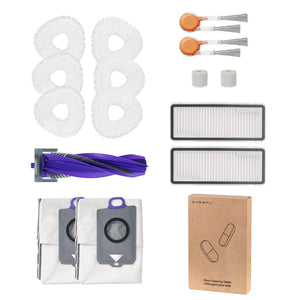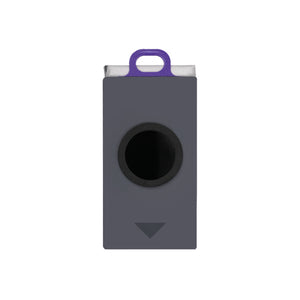Ever notice your robot vacuum dying mid-clean? Battery life is the most common pain point owners face, cutting efficiency and adding cost. A recent survey shows over 60% of users replace batteries within three years—often sooner without proper care.
This guide explains battery life expectancy, maintenance tips, replacement advice, and even what users say about real-world performance. With practical steps and smart picks like Narwal models that feature built-in battery management, you’ll learn how to keep your robot vacuum powered longer and cleaning stronger.
Importance of Battery Care for Robot Vacuums
Robot vacuum battery life directly influences uninterrupted cleaning and overall user satisfaction. By prioritizing robot vacuum cleaner battery life, users can ensure maximum runtime and prevent early battery degradation, ultimately optimizing their investment in smart home cleaning technology.
For example, high-end models like the Narwal Freo Z Ultra and Freo X Ultra come with built-in battery management systems that help extend battery life. With the right habits, you can make the most of these features and enjoy consistent cleaning results.
Battery Usage Tips
Adjusting cleaning frequency and selecting appropriate modes not only supports device longevity, but also significantly affects robot vacuum battery life. Reducing unnecessary high-power runs plays a key role in stabilizing and enhancing robot vacuum cleaner battery life.
Use Appropriate Cleaning Modes
Most robot vacuums have multiple cleaning modes, from eco or standard for routine use to high-power modes for deeper cleaning. Opting for eco or standard mode in daily use helps conserve a lot of battery power.
The Narwal Freo Z Ultra, for instance, offers different modes for various cleaning tasks, so you can switch to eco mode for regular runs and only use high power when needed. Limiting high-power mode helps slow down battery degradation, giving you longer-lasting use.
[cta:narwal-freo-z-ultra-robot-vacuum-mop]
Avoid Full Battery Drains
Allowing the battery to drain completely puts extra strain on its cells, which can shorten its lifespan. To maintain lithium-ion batteries, recharge them before they fully drain. For instance, when using the Narwal Freo X Ultra, aim to recharge when the battery drops to around 20%. A minor change like this can extend battery life, helping you avoid frequent replacements.
[cta:narwal-freo-x-ultra-robot-vacuum-mop]
Optimize Cleaning Sessions
Running too many cleaning cycles can quickly wear down a battery. Instead, set your vacuum to clean based on actual needs. High-end models like the Freo X Ultra allow you to customize cleaning schedules, so you can limit daily runs in low-traffic areas and focus more on high-traffic spots. This not only extends the battery life but also reduces wear on other components, ensuring a longer lifespan for the entire vacuum.
Avoiding constant charging helps prolong robot vacuum battery life and keeps the device operating at peak performance, thus enhancing robot vacuum cleaner battery life in the long run.
What Affects Robot Vacuum Cleaner Battery Life?
Many users wonder about the typical robot vacuum cleaner battery life and what factors can decrease it. Cleaning frequency, floor surface type, battery capacity, and proper maintenance all have significant impacts on both robot vacuum battery life and long-term function. Understanding these variables is key for users who want to maximize their device’s performance and avoid unexpected downtimes due to battery issues.
The Robot Vauum Battery Life Expectancy
On average, most robot vacuum cleaner batteries last between 2 to 3 years, depending on how often they are used and how well they are maintained. Daily heavy-duty cleaning or frequent use of high-power modes tends to shorten lifespan, while eco modes and proper charging habits can extend it.
Different brands and models show noticeable variation in battery durability:
- Entry-level models (e.g., budget Roomba or Eufy units): Batteries often show wear within 1–2 years, especially with daily cleaning in large homes.
- Mid-range models (such as Roborock): Typically achieve 2–3 years of steady performance before requiring a replacement.
- High-end models (Narwal Flow and Freo Z Ultra): Thanks to intelligent battery management systems and optimized charging, these devices can maintain strong runtime for 3–4 years or more, outlasting many competitors.
In short, while the average lifespan of robot vacuum batteries is limited, investing in models with advanced battery protection—like Narwal Flow—helps reduce replacement frequency and ensures consistent cleaning power over time.
[cta:flow-robot-vacuum-and-mop]
Ideal Charging Practices
The best way to maintain consistent robot vacuum battery life is by establishing effective charging habits. Consistent and moderate charging has a direct positive impact on robot vacuum cleaner battery life and device reliability.

Let the Battery Cool Before Charging
After each cleaning session, the battery may be warm from use. Connecting it to the dock immediately can stress the cells, especially over time. Allowing a short cooling period before charging is an easy way to preserve the battery’s health. Narwal’s Freo Z Ultra, with its smart battery management, optimizes this process to prevent unnecessary strain, giving it an edge in longevity and performance.
Regular Charging Routine
Establishing a consistent charging routine helps maintain a steady power level and ensures your vacuum is ready when you need it. Narwal models like the Freo Z Ultra and Freo X Ultra return automatically to their docks after cleaning, making it simple to keep them charged without overdoing it. Consistent recharging at moderate levels keeps the battery healthy and ready for use, even with regular cleaning schedules.
Avoid Overcharging
Modern robot vacuums, including Narwal’s models, have built-in overcharge protection, but it’s still best not to leave them on the dock for days. While overcharging is less of an issue with advanced models, constant top-off charging can still add slight stress to the battery. If you won’t be using the vacuum for a while, consider removing it from the dock after a full charge. This small step helps maintain battery health without sacrificing convenience.
Beyond daily charging habits, some robot vacuums also benefit from a battery reset or calibration process, which can help restore lost capacity and improve runtime.
How to Reset and Calibrate a Robot Vacuum Battery
Resetting and calibrating a robot vacuum battery can help fix charging errors and improve runtime accuracy.
Some models allow a battery reset, done through a soft reset (via the app or button combination) or a hard reset (factory reset).
Calibration is also useful: run the vacuum until it fully discharges, then recharge it to 100% in one go. While calibration won’t extend the actual lifespan, it ensures more accurate runtime reporting and can sometimes recover minor efficiency loss.
For best results, only perform calibration every few months and follow your model’s instructions.
Storage Tips for Battery Longevity
Where and how you store your vacuum matters, especially if it will sit unused for extended periods.

Store at Room Temperature
Lithium-ion batteries work best in stable temperatures. For optimal battery health, keep your vacuum in a room with temperatures between 18°C and 28°C (64°F to 82°F). Keep away from spots with direct sunlight, high heat, or very low temperatures. Narwal vacuums like the Freo X Ultra and Freo Z Ultra perform well in a variety of conditions, but stable storage conditions will further protect battery health during periods of inactivity.
Keep Away from Heat Sources
Keeping your robot vacuum close to heat sources like radiators or vents may harm its battery. Excessive heat accelerates wear on the battery cells, leading to decreased capacity and shorter runtime. By keeping your Narwal vacuum in a cooler area, you reduce the chance of long-term damage, preserving its cleaning power and runtime.
Long-Term Storage Precautions
When storing the vacuum for over a month, avoid putting the battery at a full or empty charge level beforehand. Aim to store it with a partial charge, around 40-50%, as lithium-ion batteries are best maintained at this level for long-term storage. Narwal’s models are designed for durability, but following this step will help maintain battery integrity even during extended downtime.
When and How Should You Replace a Robot Vacuum Battery?
Even with good care, most robot vacuum batteries only last 2–3 years before showing signs of wear. Knowing when and how to replace them is key to keeping your robot vacuum running smoothly.
Signs It’s Time to Replace
- Noticeably shorter cleaning cycles (battery drains much faster than before).
- Charging takes unusually long or doesn’t complete properly.
- The vacuum won’t hold a charge, even after a full recharge.
Where to Buy Replacement Batteries
Always choose official or authorized channels—such as the brand’s website or certified retailers. Generic batteries may be cheaper but often lack proper capacity or safety standards, which can shorten the lifespan of your robot vacuum.
Common Battery Types
Most modern models, including high-end vacuums like Narwal Flow and Freo Z Ultra, use lithium-ion packs with capacities between 2,500–6,400mAh. Larger-capacity batteries provide longer runtime but need proper care to avoid degradation.
By monitoring performance and replacing batteries through trusted sources, you can ensure consistent cleaning results and extend the overall life expectancy of your robot vacuum.
How Much Does a Robot Vacuum Battery Replacement Cost?
A typical robot vacuum battery replacement costs between $40 and $120, depending on the brand and model. Most batteries last 2–3 years, after which replacement becomes necessary if you notice shorter runtime or slower charging.
Entry-level models usually fall on the lower end of the price range, while premium vacuums with larger-capacity batteries are more expensive. For the best results, always purchase from official websites or authorized retailers, since genuine batteries ensure proper fit, stable runtime, and protect your warranty.
Planning for replacement costs helps you decide whether it’s worth changing the battery or upgrading to a new robot vacuum.
How to Check Robot Vacuum Battery Health
You can check robot vacuum battery health in two main ways: through the app (if your model supports it) or by observing performance changes. Many newer models include an app feature that displays battery status or even alerts when the battery capacity begins to decline.
If your robot vacuum doesn’t provide battery health info in the app, watch for signs like shorter runtime, slower charging, or failure to complete a cleaning cycle. These are common indicators that the battery is wearing out. A simple calibration—running the battery down fully and then charging it back to 100%—can sometimes improve accuracy in battery readings, though it won’t reverse natural aging.
For premium models such as Narwal Flow or Freo Z Ultra, intelligent battery management systems monitor charging cycles automatically, helping reduce wear and giving you a more accurate picture of long-term battery condition.
What Do Users Say About Robot Vacuum Battery Life?
Community discussions often highlight real-world patterns that match expert advice:
- Average Lifespan in Practice: Most users report that their robot vacuum batteries start losing runtime after about 2 years, even with moderate use. By year 3, many notice shorter cleaning cycles unless the battery is replaced.
- Calibration Tips: A common community trick is to fully drain and recharge the battery once every few months. While not a fix for aging cells, many owners feel it helps recalibrate the power gauge and avoid “false low battery” warnings.
- Brand Comparisons: Users frequently compare experiences across brands. Roomba and Roborock owners often mention consistent battery life but higher replacement costs. Narwal models like Flow and Freo Z Ultra are praised for their intelligent battery management, which many say helps reduce the frequency of replacements.
- Everyday Habits: In forums, owners agree that avoiding constant high-power cleaning and keeping vacuums in cool storage conditions makes a big difference in battery longevity.
By combining manufacturer guidelines with user-tested habits, you can better manage robot vacuum battery care and get the most out of each charge cycle.
Maintenance Tips for Optimal Battery Health
Simple actions—like cleaning charging contacts—prevent interruptions and support steady robot vacuum battery life. Monitoring signs of wear lets you proactively address robot vacuum cleaner battery life issues before performance decreases.

Clean Battery Contacts Regularly
Dust and debris can collect on the battery contacts over time, which can reduce charging efficiency. Every month, gently wipe the contacts on both the vacuum and its charging dock with a dry cloth. The Narwal Freo Z Ultra, for example, charges more consistently when contacts are clean, ensuring you get a full, efficient charge every time it returns to the dock.
Monitor for Signs of Battery Wear
Over time, all batteries experience some degradation, even with proper care. If your vacuum’s runtime drops significantly or it struggles to hold a charge, these are signs that a replacement may be needed. Narwal’s high-quality batteries are designed to last, but monitoring for these signs can help you catch issues early and keep the vacuum running smoothly.
Use Genuine Replacement Batteries
When it’s time to replace the battery, always choose a genuine Narwal replacement. Genuine batteries are made to fit the vacuum’s requirements, providing top performance and safety. Non-genuine batteries may be cheaper but can lack proper compatibility, risking both battery life and device functionality. For models like the Freo Z Ultra and Freo X Ultra, genuine batteries offer the best compatibility and peace of mind.
To ensure consistent robot vacuum battery life after replacement, insist on authentic batteries and parts. This protects robot vacuum cleaner battery life and maintains warranty validity.
FAQs
How often should you change the battery in your robot vacuum?
With good maintenance, most robot vacuum batteries last around 2-3 years. If you see a noticeable decline in runtime or charging speed, it might be time for a replacement.
Does using high power mode frequently harm the battery?
Yes, using high-power mode often can wear down the battery faster. Narwal’s Freo models provide eco-friendly cleaning modes to balance power and battery conservation.
Can I leave my Narwal vacuum on the dock when not in use?
Yes, Narwal’s models have overcharge protection, so it’s safe to leave them docked. However, for extended non-use, remove the vacuum from the dock to avoid unnecessary charging.
How can you revive a weak robot vacuum battery?
Sometimes a simple calibration helps. Let the battery fully discharge once, then recharge it to 100% without interruption. This can temporarily restore some capacity.
How do you know if your robot vacuum is charging properly?
Check for charging lights on the dock or in the app. A steady indicator usually means it’s charging; a blinking or absent light may signal an issue.
Why does my robot vacuum stop charging or lose connection at the dock?
Dirty charging contacts, uneven floors, or a loose plug often cause unstable charging. Wipe the contacts clean and place the dock on a flat, stable surface.
When should you buy a replacement robot vacuum battery?
If runtime drops sharply or the unit struggles to hold a charge even after resets, it’s time for a new battery—usually after 2–3 years of use.
Where should you get a new robot vacuum battery?
Always buy from the official store or authorized dealers to ensure compatibility and safety. Avoid third-party batteries that may shorten lifespan or void warranty.
Keep Your Robot Vacuum Powered for Years to Come
Caring for your battery isn’t just maintenance—it’s the key to consistent cleaning performance and longer device life. With habits like proper charging, timely replacements, and routine upkeep, you can maximize battery health and avoid interruptions.
If you’re ready for a robot vacuum designed with long-lasting battery management in mind, Narwal’s advanced models—like Flow and Freo Z Ultra—offer self-maintaining features and efficient power systems that reduce everyday worries. A little care paired with the right technology means your floors stay spotless, year after year.





















